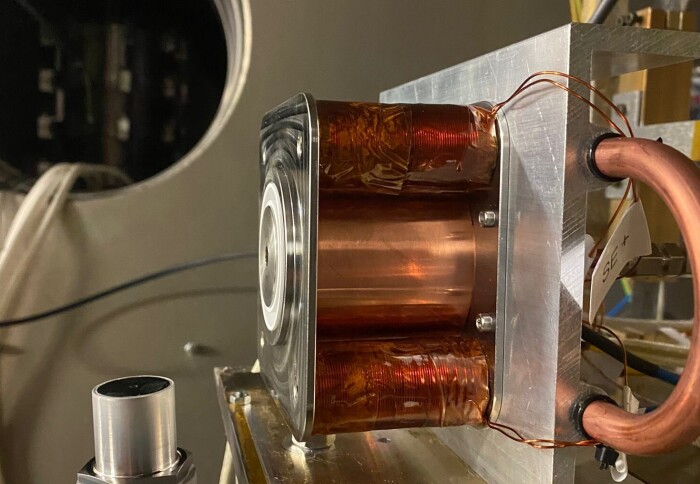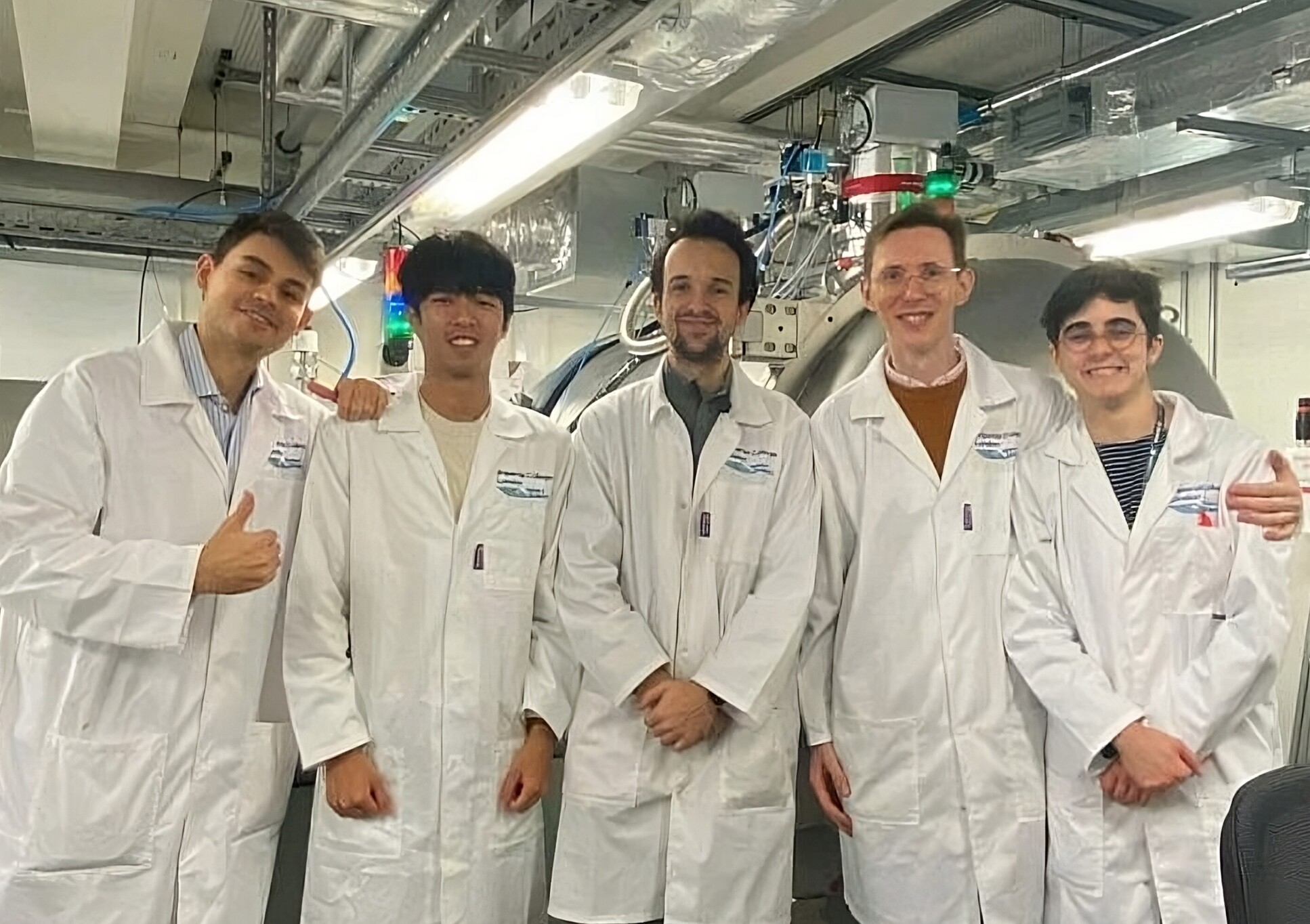Imperial researchers collaborate to achieve water-fuelled satellite engine
by Ayesha Khan

Breakthrough demonstration of a satellite engine powered by water provides new opportunities space exploration.
A successful test campaign, hosted at the Imperial Plasma Propulsion Laboratory (IPPL), has demonstrated, for the first time, that the ignition and sustained operation of a satellite engine can be achieved using the products of water electrolysis as a sustainable fuel source.
Satellite engine systems enable satellites to move around space by producing a force called thrust. One type of engine commonly used for satellites is called a Hall Effect Thruster (HET), which are well known for their reliability and durability on challenging space missions. HETs typically use expensive ionised noble gases that are then accelerated out of the spacecraft, generating thrust.
A collaborative effort by experts within Imperial’s Department of Aeronautics, Singapore-based Aliena Pte Ltd and URA Thrusters Ltd have successfully shown that a new optimised engine, AQUAHET, can accelerate oxygen ions derived from water to produce thrust.
Dr Aaron Knoll, Reader in Spacecraft Engineering and Head of IPPL said: “This experimental demonstration of water as a high efficiency propellant for spacecraft propulsion opens up exciting possibilities for space exploration. Gathering propellant in space, rather than spending the energy to carry it with us from Earth, opens the possibility for much more ambitious space missions than anything that’s been achieved.”

A shift to using water, which is present throughout our solar system, including the Moon and Mars, is revolutionary on many grounds. Firstly it allows for fuel to be stored in unpressurised vessels prior to launch, as such, many regulatory protocols can be bypassed and propellant tanks can be designed in different shapes to maximise room in spacecraft. Secondly, water is a more affordable and abundant resource than noble gases, making it a more cost-effective choice. Finally, utilising dual by-products of water electrolysis, hydrogen and oxygen, opens up the possibility of using HETS in tandem with chemical thrusters, which could open the door to a new range of mission scenarios.
Dr James Sadler, Chief Technology Officer, URA, comments on the testing undertaken and the future: “The testing performed, and outstanding results collected by the consortium using the disruptive URA Thrusters AQUAHET and Aliena cathode technologies has shown that the potential for a fully sustainable electric propulsion future is now within our grasp.
“These results will open up the next stage of the development of the AQUAHET engine towards a commercial product that has the potential to revolutionise the space industry in the next 10 years.”
Following the successful test campaign, the consortium seeks to further develop such systems for flight readiness. With promising legacy merits (from HETs), namely use for extended space operations, AQUAHET is a promising choice of propulsion for emerging space missions.
Article text (excluding photos or graphics) © Imperial College London.
Photos and graphics subject to third party copyright used with permission or © Imperial College London.
Reporter
Ayesha Khan
Department of Aeronautics